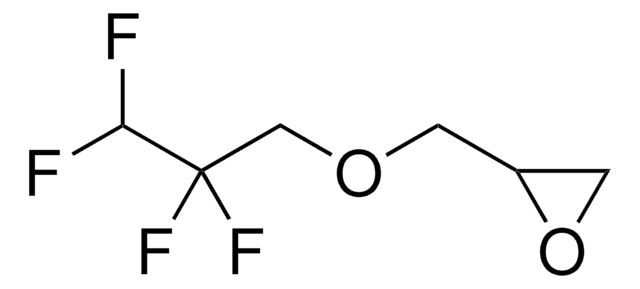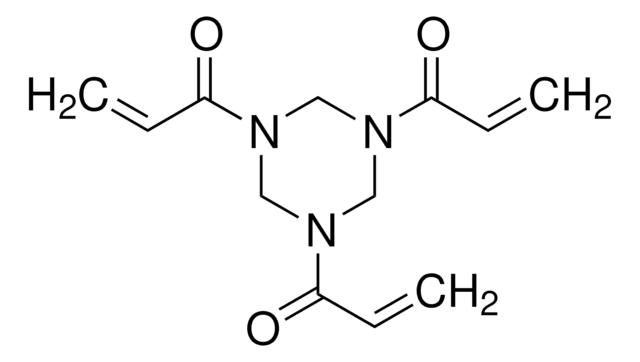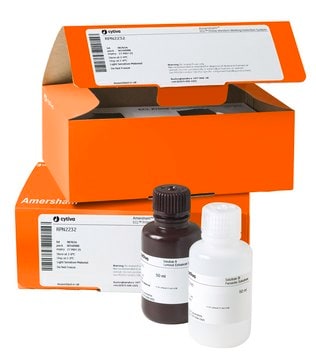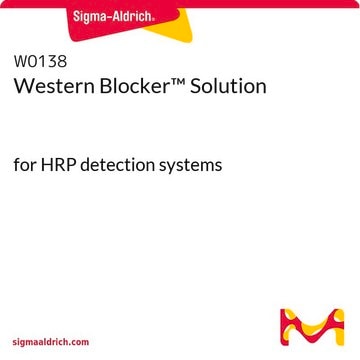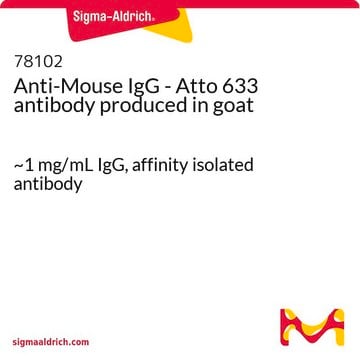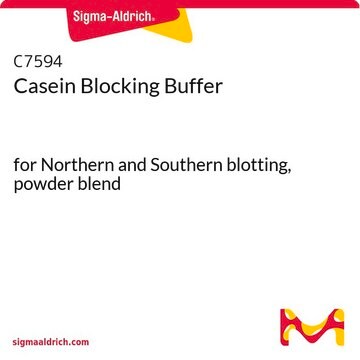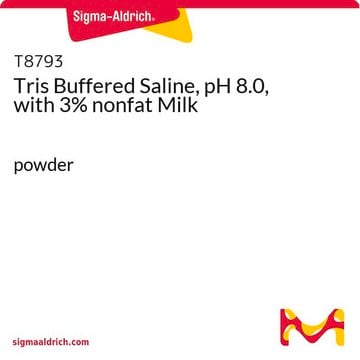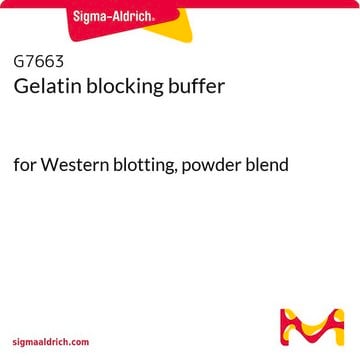WESTBL-RO
Roche
Western Blocking Reagent, Solution
solution, sufficient for 10 blots (11921673001 [100 cm2]), sufficient for 60 blots (11921681001 [100 cm2])
Synonyme(s) :
blocking reagent for western blots
About This Item
Produits recommandés
Forme
solution
Niveau de qualité
Utilisation
sufficient for 10 blots (11921673001 [100 cm2])
sufficient for 60 blots (11921681001 [100 cm2])
Conditionnement
pkg of 100 mL (11921673001)
pkg of 6 × 100 mL (11921681001)
Fabricant/nom de marque
Roche
Température de stockage
2-8°C
Catégories apparentées
Application
Qualité
Forme physique
Notes préparatoires
- Tris buffered saline (TBS), pH 7.5
Note: Since sodium azide inhibits POD, it must not be used as antimicrobial agent when using POD-conjugates.
- TBS-Tween (TBST)
Note: 0.1% Tween 20 is suitable for the most applications, but—depending on the membrane and on the antibody used—different detergents (like SDS, Triton X-100 and Nonidet P40 and detergent concentrations from 0.01 to 1% may lead to better results.
- Blocking solution (1%)
Note: Since sodium azide inhibits POD, it must not be used as antimicrobial agent when using POD-conjugates.
- Blocking solution (0.5%)
- Antibody solutions
Note: The concentration of the blocking reagent is an important parameter for improvement of the signal to noise ratio in Western blots. If high background appears even under optimized antibody concentrations, increase the concentration of the blocking reagent during the antibody incubations and washing steps from 0.5% to 1%. In case of weak signals even with prolonged antibody incubations lower the concentration of blocking reagent during the antibody incubations and washing steps from 0.5% to 0.1%.
Autres remarques
Code de la classe de stockage
12 - Non Combustible Liquids
Classe de danger pour l'eau (WGK)
WGK 1
Point d'éclair (°F)
does not flash
Point d'éclair (°C)
does not flash
Certificats d'analyse (COA)
Recherchez un Certificats d'analyse (COA) en saisissant le numéro de lot du produit. Les numéros de lot figurent sur l'étiquette du produit après les mots "Lot" ou "Batch".
Déjà en possession de ce produit ?
Retrouvez la documentation relative aux produits que vous avez récemment achetés dans la Bibliothèque de documents.
Les clients ont également consulté
Notre équipe de scientifiques dispose d'une expérience dans tous les secteurs de la recherche, notamment en sciences de la vie, science des matériaux, synthèse chimique, chromatographie, analyse et dans de nombreux autres domaines..
Contacter notre Service technique